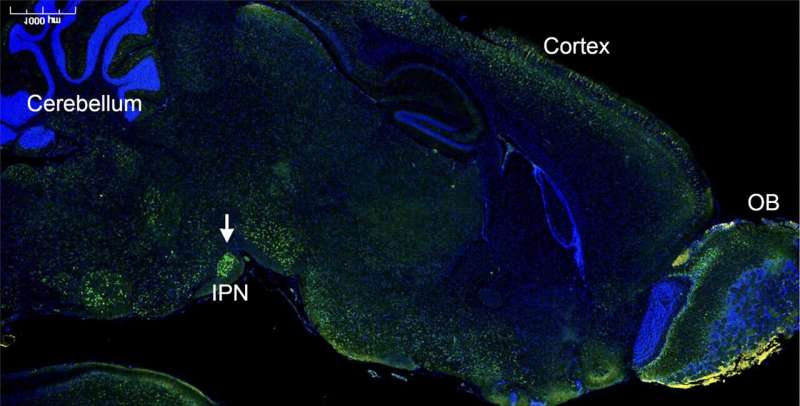This article has been reviewed according to Science X's editorial process and policies. Editors have highlighted the following attributes while ensuring the content's credibility:
fact-checked
peer-reviewed publication
proofread
Intranasal CRISPR psychotropic reduces anxiety-related behavior in mice

A study in mice reports a CRISPR/Cas9 gene-editing delivery system, capable of bypassing the blood-brain-barrier and modulating neuronal receptor pathways, to treat chronic anxiety.
Troy Rohn and colleagues targeted 5HT-2A, a serotonin receptor known to play a role in anxiety and depression. The authors used a vector based on an inactivated adeno-associated virus to deliver the vector through the nose. The vector delivers a guide RNA to neurons. The guide RNA binds to the target receptor gene, HTR2A, which is then cut at a specific location by the enzyme Cas9. The work is published in the journal PNAS Nexus.
Five weeks after intranasal delivery of the vector and package, 75 mice were tested with standard behavioral assays measuring mouse anxiety. For example, anxious mice will choose to spend more time in dark areas and tend to bury unfamiliar objects such as marbles in sawdust rather than letting them be.
Treated mice spent 35.7% more time in light areas than controls and showed a 14.8% decrease in the number of marbles buried compared with controls. Mice treated with the CRISPR package showed an 8.47-fold decrease in HTR2A expression in their brains, compared with control mice. According to the authors, noninvasive, intranasal delivery of CRISPR/Cas9 therapeutics may help patients who exhibit treatment-resistant anxiety.
More information: Troy T. Rohn, Genetic modulation of the HTR2A gene reduces anxiety-related behavior in mice, PNAS Nexus (2023). DOI: 10.1093/pnasnexus/pgad170


















